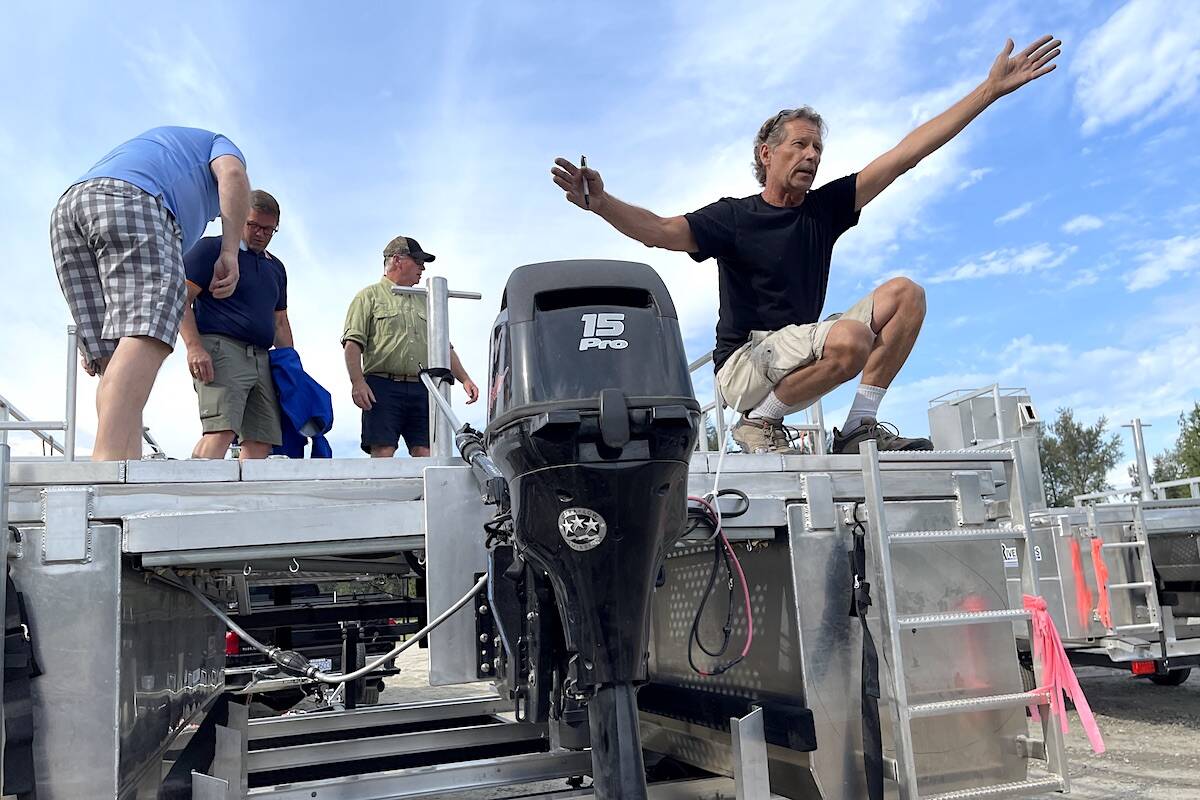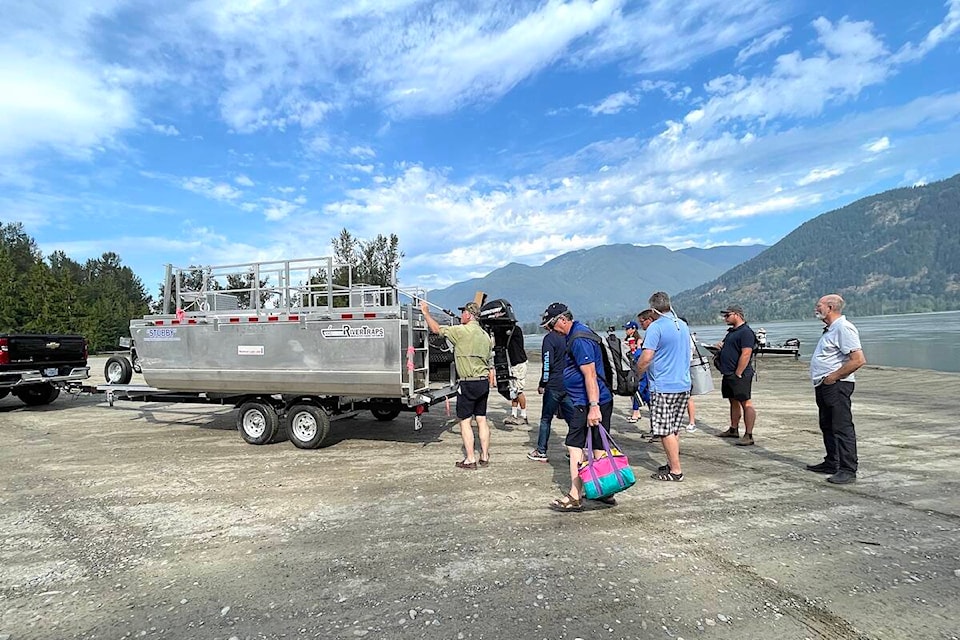Retired engineer Peter Krahn dreams of the day when iconic B.C. salmon swim upstream to their spawning beds in peak physical condition – free of any net marks or bruising.
That’s the goal of the selective fishing technology he’s developing.
Krahn set out three years ago to design a fish trap platform that would permit the release of non-targeted fish, helping them to reach their spawning grounds at the “highest level of fitness.”
Now he’s in the process of filing for a worldwide patent for the selective fishing systems he named “RiverTraps.”
Krahn transported two of the prototypes to Chilliwack Tuesday for a demonstration.
Several elected officials, DFO reps, and fishing groups joined Krahn at Island 22 Regional Park in Chilliwack on Tuesday, including MPs Ed Fast, Bob Zimmer, and Rich Perkins, who is the Conservative shadow minister for Fisheries.
Krahn showed how the prototypes work at the boat launch, as well as conducting a live demonstration with a fish trap anchored in a back eddy of the Fraser.
The technology provides “an alternate technique” to gillnetting and beach-seining, which are used in First Nations economic opportunity fisheries.
So far the federal government has invested $1 million in Krahn’s research project through a First Nations partnership, while Krahn contributed $1.6 million himself to get the project up and running. The total investment will be about $4.5 million, Krahn estimated, including the research and testing.
The RiverTraps selective fishing systems include a fish selection platform, containment net, removable wing nets, and a release gate.
“In most encounters with other fishing gear, particularly gillnetting and beach seining, the fish are so injured that even if they do make it to the spawning ground they don’t have a level of fitness to actually spawn.
“They become just bait after that,” Krahn explained.
He’s been conducting tests with his two prototypes and has forged several partnerships, including ones on the lower Fraser, mid Fraser, Stewart Lake, as well as on the Nass River Valley on the Meziadin River.
Krahn described a scenario where the trap had six chinook swim into in the containment net, guided by wing nets, half of which were hatchery marked fish.
“We dip-net out the hatchery fish, and harvest them. Once we’ve got them out, there is a curtain that goes down in front of that opening. We manually lift that curtain and out they go.
“We have not physically touched the fish. We have not taken them out of the water, which is the biggest stressor. They haven’t been marked by gillnets.”
That yields higher value fish.
“So you can harvest less fish, get a higher price, and have the same economic revenue,” he said
Prince George-Peace River-Northern Rockies MP Bob Zimmer asked Krahn to explain his reason for the project, adding that he knew the overarching aim of it wasn’t just money, but rather a true concern for the fish.
Krahn explained as one of six children, fishing was always a very important part of the family diet and relaxation. His father, who fabricated sheet metal, taught him the importance of seeing a project through.
Growing up with tackle store owner Fred Helmer of the Fraser River Sportfishing Alliance, Krahn said he spent ample time on the river system.
“But we’re getting on. We need to bring hope, and training and passion to the young people because they’re the ones going to be taking over. That’s why I am heavily invested in the schools with this.”
High school students and students from UNBC will be involved in ongoing research and fabrication, and the technology has also been tested on the Harrison River.
“As fisheries are moving to selective fishing to reduce the harm, it will be up to the regulators who issue the permits to decide which technique will be allowed for the fishery,” Krahn noted.
“All I am doing is providing another option.”
RELATED:
RELATED:
Do you have a story idea to share? Email:
jfeinberg@theprogress.com
Like us on and follow us on .





